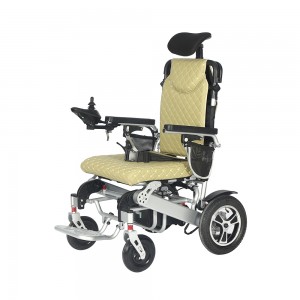What Will Electric Wheelchairs Be Like in the Next 50 Years?
The rapid evolution of technology over recent decades has significantly impacted various aspects of our lives, including mobility assistance. As we look to the future, electric wheelchairs are poised to undergo transformative advancements that will greatly enhance the lives of those with mobility impairments. Here’s a glimpse into what electric wheelchairs might look like 50 years from now:
1. Enhanced Mobility and Maneuverability
The future of electric wheelchairs promises greater agility and versatility. Innovations in motor technology, advanced materials, and sophisticated control systems are expected to enhance maneuverability. Future wheelchairs may feature cutting-edge sensors and artificial intelligence to navigate diverse terrains seamlessly. These advancements will enable electric wheelchairs to automatically adjust settings for optimal performance based on environmental conditions.
2. Intelligent and Adaptive Features
Expect electric wheelchairs to become increasingly intelligent and adaptive. Advanced sensor technologies could be used to detect obstacles and automatically adjust speed or direction to prevent collisions. Moreover, machine learning algorithms may allow wheelchairs to learn from user preferences and adapt their functions accordingly, providing a more personalized and intuitive user experience.
3. Lightweight and Portable Designs
Traditional electric wheelchairs can be heavy and cumbersome. In the next 50 years, advancements in materials such as carbon fiber composites may lead to the development of lightweight yet durable wheelchairs. Foldable or modular designs could also become common, making it easier to transport and store the wheelchair. These innovations will address the challenges of bulkiness and enhance user convenience.
4. Energy Efficiency and Extended Battery Life
Future electric wheelchairs will likely emphasize energy efficiency and extended battery life. With advancements in battery technology, we can anticipate more powerful and longer-lasting batteries. Additionally, regenerative braking systems might be introduced to capture and reuse energy during braking, further extending battery life and enhancing overall efficiency.
5. Integration with Smart Technologies
As technology continues to evolve, electric wheelchairs are expected to integrate seamlessly with smart technologies. Future models could feature built-in connectivity, allowing users to control and monitor their wheelchairs via smartphones or wearable devices. Integration with smart home systems may enable users to manage their environment—such as adjusting lighting, temperature, or accessing various functions—through voice commands or gestures.
Conclusion
The next 50 years hold exciting possibilities for the development of electric wheelchairs. With advancements in mobility, intelligent features, lightweight designs, energy efficiency, and smart technology integration, these innovations will not only improve the quality of life but also significantly enhance the independence of wheelchair users. As we move forward, the electric wheelchair will continue to evolve, bringing new levels of comfort, functionality, and autonomy to its users.
Post time: Aug-30-2024


